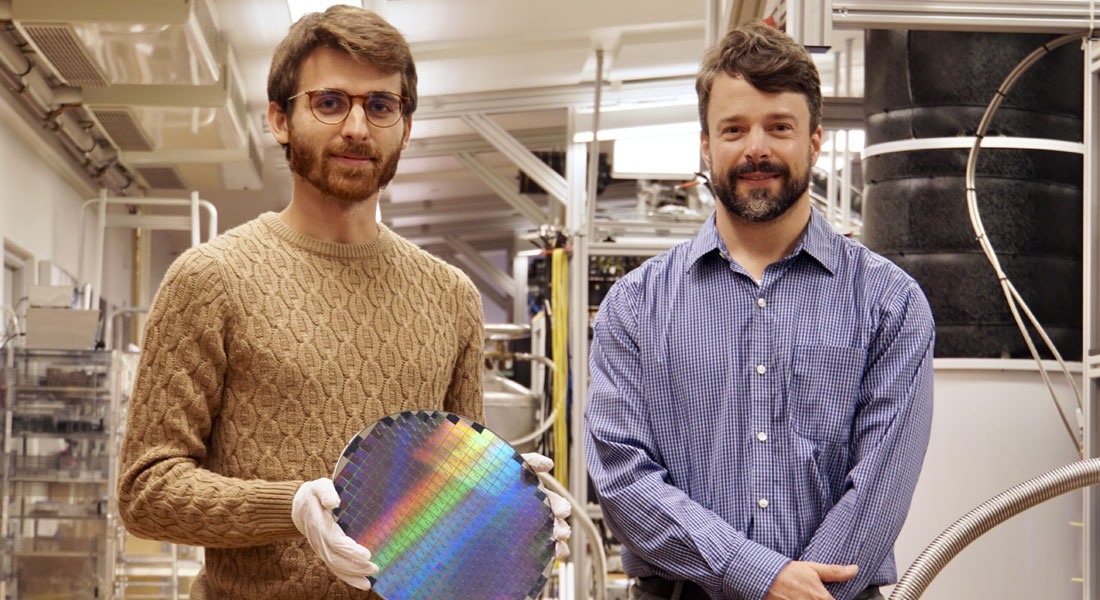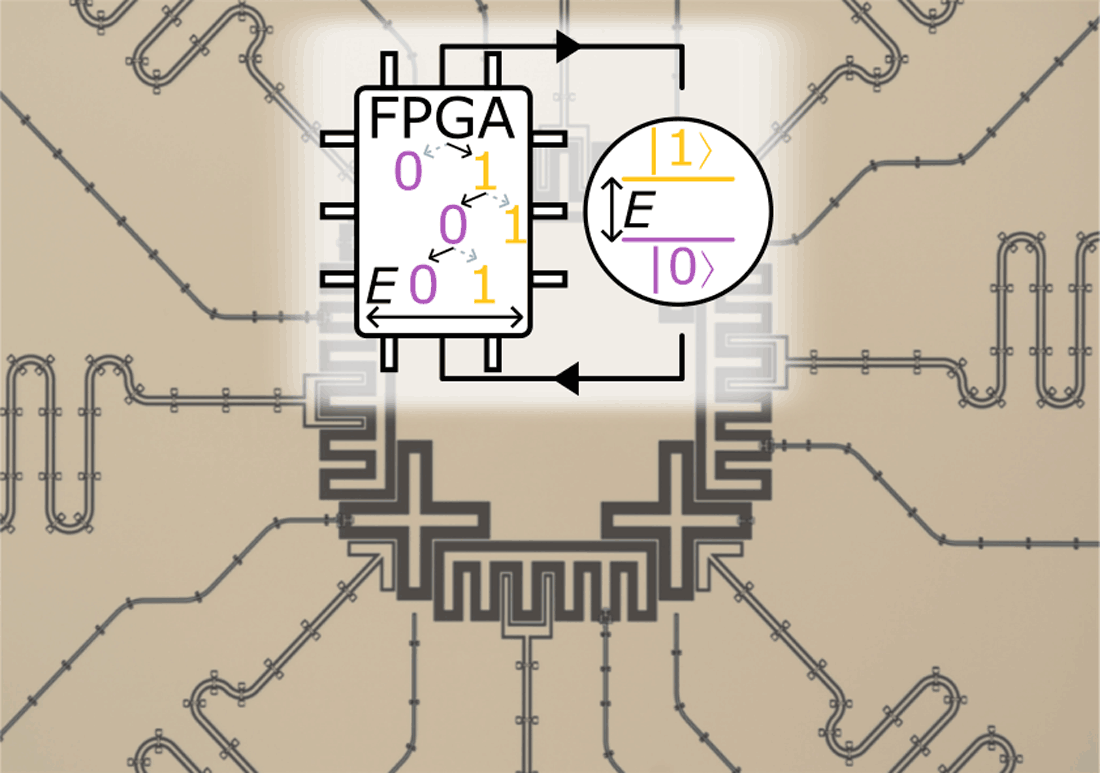Clever algorithm results in a new method to mitigate noise in quantum devices
Quantum researchers have deployed a new algorithm to manage noise in qubits in real time. The method can be applied to a wide range of different qubits, even in large numbers.

Noise is the "ghost in the machine" in the effort to make quantum devices work. Certain quantum devices use qubits—the central component of any quantum processor—and they are extremely sensitive to even small disturbances in their environment.
A collaboration between researchers from the Niels Bohr Institute, MIT, NTNU, and Leiden University has now resulted in a method to effectively manage the noise. The result has been published in PRX Quantum.
Decoherence in quantum states – what is that?
Noise in quantum devices is broadly understood as anything that disturbs or even changes the coherent state you are aiming to store, manipulate or read. Such unwanted disturbances are usually referred to as decoherence.
Quantum devices are capable of extremely high precision and sensitivity, much higher than can be obtained in classical physics, and the promise of the capabilities of quantum devices are many: Highly increased precision in medical appliances, resulting in better diagnostics, quantum simulations of molecules or drugs, enhanced security in information technologies and vastly improved computing speed.

The main obstacle in developing quantum computers is the magnetic and electrical noise that interferes with quantum effects. To tackle this, the Quantum Processing Unit (QPU) is cooled to temperatures just above absolute zero (−273°C). This cooling takes place inside a cryostat, shown in the picture, with the processor positioned at its base. Photo: Amir Karamlou, MIT.
But it comes with the price of a much higher risk of decoherence – and as a consequence, no new information at all, if you don’t manage the noise somehow.
Mitigating decoherence is a challenge that comes in many forms
Noise could be electrical or magnetic fluctuations in the material surrounding the qubits, and you can go several ways to handle this: Optimize the material around the qubits, try to optimize their design, make them less sensitive to the environment or, like it’s been done for the last 10-15 years, find ways to cancel out the inevitable noise to get a better performance.
Dr. Fabrizio Berritta explains: “You can measure the actual noise, and once we know the noise, we can correct the control-path to mitigate the decoherence”.
Speed is everything when handling noise
From the Niels Bohr Institute, University of Copenhagen, MIT, the Norwegian University of Science and Technology, and Leiden University a new twist to this technique is now on the table.
One of the many challenges in cancelling out some kinds of noise is that it has to happen extremely fast. Imagine you’re sitting at a computer next to the device receiving readings from the quantum device, trying to correct or cancel out the noise.
The time it takes for the quantum state-reading to travel to your desktop is so long that the noise has already changed, when you get the reading. You’re always late – by default.
“Frequency Binary Search” is the name of the solution
So the team of researchers, led by Fabrizio during his Ph.D. exchange at MIT, has developed and implemented what they call a “Frequency Binary Search”.
The algorithm has been implemented on a Quantum Machines controller with an integrated “Field Programmable Gate Array” (FPGA). This controller manipulates and reads the qubits, and collects the data from each experiment. The controller then estimates the qubit frequency, without requiring the data to travel (relatively slowly) to the desktop.
The qubit frequency fluctuates because of the environment around the qubit, and when the experiment is over, the researchers have a “real time recording” of both the collected data and fluctuations in the qubit frequency.
Like mentioned before, if you know the noise and you can update the qubit controls fast enough, it is manageable.

A new idea sprung from using emerging tools
“We were not used to these superconducting qubits with microwave driving, so during a couple of weeks, Jacob Benestad, Jan Krzywda and I sat down with our supervisors and discussed the options for an efficient algorithm.
Then we experimentally validated the algorithm with Lukas Pahl and Melvin Mathews at MIT. And you could ask why we came up with using the FPGA now and not earlier for this purpose – FPGAs have been around for years and have been used e.g. in particle accelerators – but in order to program them, you need special skills – more in line with electrical engineering than physics.
The double knowledge in electrical engineering and physics you need is scarce within our field. Our work was enabled by commercial quantum controllers, which allowed us to use FPGAs via a programming language similar to the familiar Python.
This enables many labs, not only in Copenhagen, but around the world, to do these kinds of experiments.”
The perspectives – looking into the future
“Today, in quantum processing units in general, we calibrate these qubits by taking many measurements: Thousands or even tens of thousands of measurements.
We need to keep track of the frequency fluctuations, and they increase with more qubits in the setup. These days we work with tens or hundreds of qubits, but maybe one day we will have setups with perhaps millions of qubits, and you will, naturally, want to be as efficient as possible, when attempting to overcome the decoherence.
With the frequency binary search you can calibrate across all the qubits at the same time with an exponential precision with the number of measurements (in practice, less than 10 measurements). With the number of qubits going up in the future, we should be able to find good use of our method”, Fabrizio explains.
Link to the scientific article: https://journals.aps.org/prxquantum/abstract/10.1103/77qg-p68k
